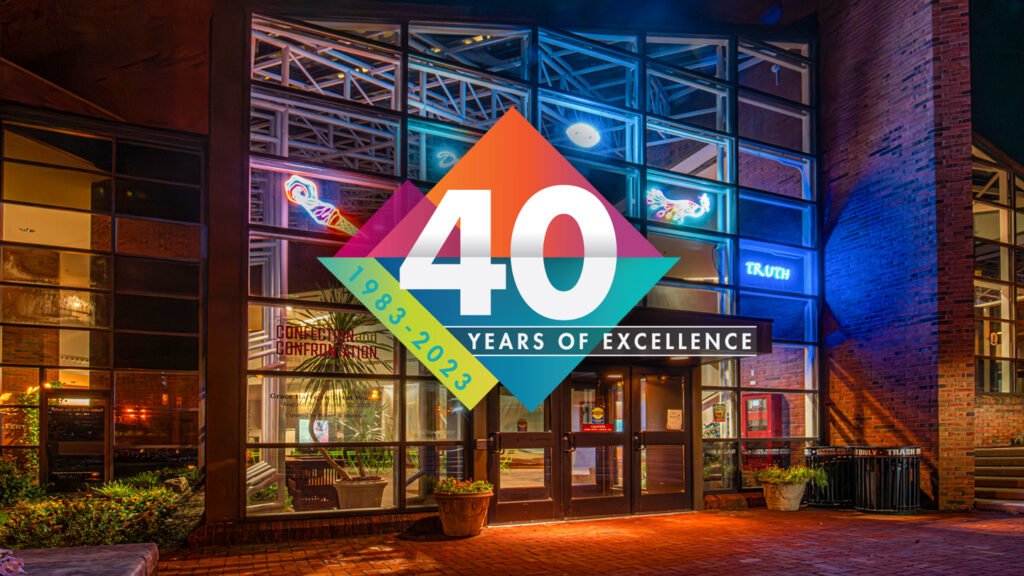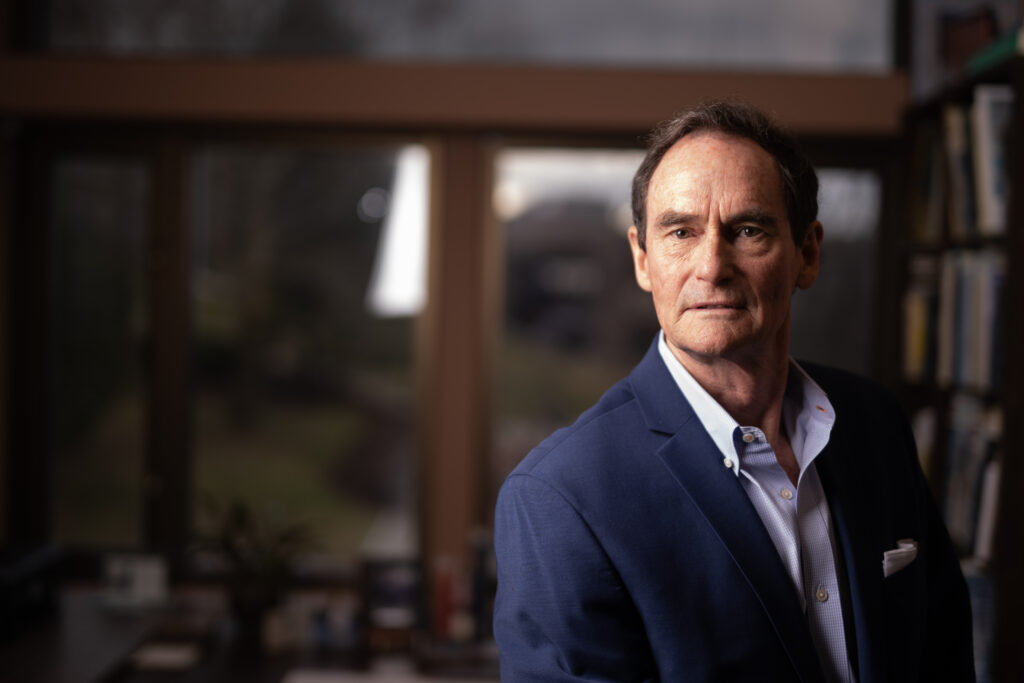Coming soon
- Next up for this yearlong series of articles celebrating Williams Center’s 40th anniversary: Larry Stockton, professor emeritus of music and former head of the department
“It’s one of the great public spaces on campus,” says the Marshall R. Metzgar Professor of Art

Williams Center for the Arts
By Bryan Hay
When Bob Mattison arrived at Lafayette in 1981, the entire art department was housed in Jenks Hall, a former biology building not designed for the arts and in very poor condition.
“I was preceded by Diane Cole Ahl (Arthur J. ’55 and Barbara S. Rothkopf Professor Emerita of Art History) and Ed Kerns (Eugene H. Clapp II ’36 Professor Emeritus of Art),” recalls Mattison, Marshall R. Metzgar Professor of Art, who recently announced his retirement. “At the end of my job interview in 1980, the last statement made by Ed Kerns was, ‘I know that this does not look like much, but we are going to make something great out of this program.’

Robert S. Mattison, Marshall R. Metzger Professor of Art History
“And indeed, we achieved that,” Mattison says. “They started to build the Williams Center soon after I arrived here. That trustee-level decision told me that the arts mattered at Lafayette and the arts were going to be an essential part of the College’s future.”
“The Williams Center fulfilled a promise that the arts would have a real place on campus, bringing together for the first-time visual arts, music, theater, and art gallery in one location,” he says.
Mattison, who teaches architecture along with modern and contemporary art, points out to his students that Williams Center, with its triangular entrance, glass roof, and a spacious lobby circled by a balcony, reflects a smaller collegiate version of the East Wing of the National Gallery of Art in Washington, D.C.
“It’s one of the great public spaces on campus,” he says. “You’re swept into the theater on one side and the gallery to the other side. They complement each other.”
“There’s a consistent, flowing energy in the center–the gallery is open during public concerts and performances. Lectures occur throughout the year; music instruction, ensemble and choral rehearsals, and classes are often happening all at the same time.”
Originally, the visual art spaces for painting, sculpture, and printmaking lined the north side on the second floor of the Williams Center when it opened in 1983. A deliberate decision was made early on to keep art history and studio art interconnected; this is a founding principle of the department, Mattison says. The student training in both components of the visual arts has enriched their educational experience and significantly enhanced career opportunities.
“I think we had one or two majors at the time the Williams Center was completed, but within a couple of years we had 30 art majors,” Mattison says. “We outgrew the space very quickly. And that’s when plans began for the Williams Visual Art Building downtown.”
As he ponders the future of the Williams Center, Mattison has his wish list, which includes an expansion of gallery space and addition of more staff and faculty offices.
Lafayette can take pride in its first-rate arts program, says Mattison, who has long appreciated the manner in which the visual arts have benefited from the strong tradition of performing arts at Williams Center.
“This college has one of the best performing arts programs I know of anywhere,” he says. “The performances in music and dance, both classical and modern, and theater are sensational, way above the level a school this size normally has.”
Audiences attending Williams Center performances over the last 40 years have enjoyed gallery exhibitions, which the Art Department created in collaboration with Michiko Okaya, former director of art galleries and collections curator. That program reads like a “who’s who” of great artists of our era. In just recent years, it has included Audrey Flack, Pope.L, Chakaia Booker, Kay Walkingstick, Xu Bing, Fred Wilson, Stephen Antonakos, Sam Gilliam, and Frank Stella. Mattison notes that in every case the exhibitions have been accompanied by residencies in which these celebrated artists worked closely with our students.
“Again, our exhibitions are way above the level a school this size typically offers, and they’re always aligned with and open during public performances,” he says.
“We’ve always had a natural and complete synergy between the different fields of the arts.”
The Williams Center stands as a physical symbol of the strides Lafayette has made over the past four decades in the arts, both for our students and the larger community, Mattison offers.
“I see a future in which we will expand this great tradition of excellence and continue to recognize the valuable presence we offer to campus and throughout the region.”